Sightseeing in City of Rivne
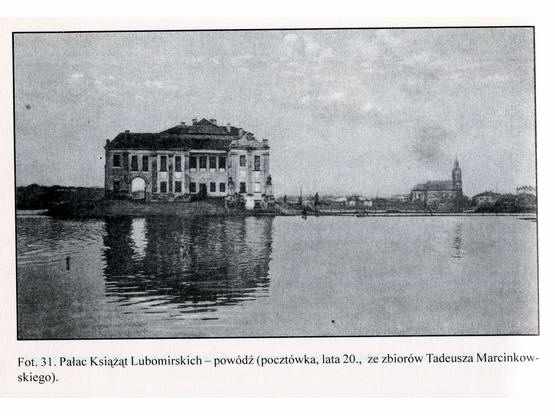
"The Palace of Lubomirski"
Zamkova Street
(Downtown, passage across the Teatralna Squire or from the side of Stadium “Avangard”)
A wooden Castle was the medieval centre of the City. The street which led to this castle
still has it’s historical name – Zamkova. The protective structure was situated on the
island which was surrounded by the water. But a fire destroyed this wooden castle and on
it’s place the building of the magnificent stone palace was started in the XVIII century
by the Lubomirski Princes. It was situated on the island and connected with Zamkova
Street by the hoist bridge. This Palace complex was named as “Venice”. The owners of
this Palace were changed with as years went by. In the 30-s of XX century this beautiful
building fell into decay and was destroyed. One of the local commercial companies had the
idea to revive this Palace a few years ago by building a hotel complex and a museum on
this place. But it isn’t still realized. Also the first Rivne electric power station was
situated on this street (today it is the building of the boxing school).
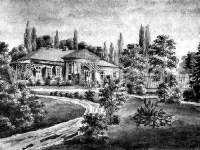
"Palatsyk" Lubomirski"

Modern park

Stanislaw
Lubomirski
Culture and Recreation Park of T.H. Shevchenko
(Downtown, entries from the side of Chornovola Avenue, Soborna Street or Kn. Olga St.)
According to legend the Park which is situated on the beautiful hills of the eastern part
of the old City was founded by Prince Lubomirski at the end of the XIX century. Many plant
species and a large greenhouse could be found here. This Park was decorated by many sculptures.
A house of the prince’s family was situated on its territory and it was called as “Palatsyk”.
Many celebrations and dramatized shows were performed in this Park. Many different fairs were
held here during the period between wars, the most famous of which is “Volynski Torhy”.
“Palatsyk” was destroyed by bombs during the period of World War II. A monument for Kobzar
was erected on its place in 1941 and the park was named after his name.
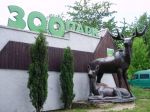
Rivne Zoo
(Kyivska St., 110)
One of the few zoos in Ukraine (total number is 8). Rivne Zoo became one of the best
ones in Ukraine during the period of its 25 year history. Today the collection of animals
is more than 150 animals from all continents of the world, 26 of which are in the
International Red Book. Many excursions on the territory of the Zoo and terrarium are
made for children and grown-ups. There is a Primary Horse Riding School in the Zoo.
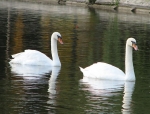
Hydropark
(S. Bandery St. and Naberezhna St.)
A historical place of the landscape art. A pair of swans is living on the territory of this park.
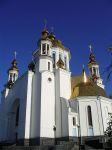
Sviato-Pokrovskyy Cathedral
(Soborna St., 6)
A magnificent Orthodox Church was built on the highest point of City of Rivne, not far
from the ancient cemetery “Hrabnik” during the period of independent Ukraine. It is
considered to be the biggest cathedrals in Ukraine which were built during the recent
years. The author of this 13-dome shrine, the height of which is 56 meters, is the local
architecture Viktor Kovalchuk. On the first floor of this cathedral is the Church of Volyn
Saints. This Cathedral is erected in classical style with the elements of art nouveau and
in structures of which there is an outstanding preference of the Ukrainian Baroque.
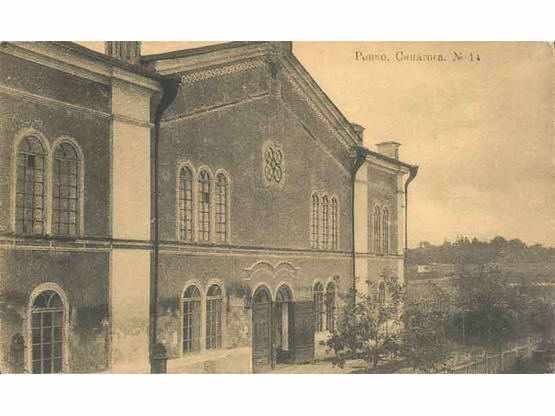
Synagogue
(Shkilna St., 33)
Before the World War II Rivne was one of the small Volyn towns, where from the beginning
of the Medieval times many Jews were settled. The main Rivne Synagogue was built at the
crossing of Shkilna and Zamkova Streets at the end of the XIX century. At this place were
several synagogues and that is why one of the oldest streets was names as Shkilna
(Ukr. Shkola – Eng. School). Synagogues were not only places for prayers but also they
functioned as schools.
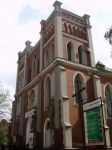
St. Anthony Catholic Church
(Maidan Muzyky (Music square))
The project of the Church was designed by Polish architect K. Voitsekhovsky and the
Church was christened in 1899. Now there is an Organ Hall in what used to be Roman
Catholic Church.
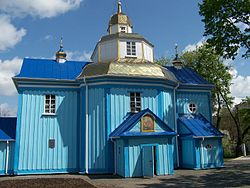
Svyato-Uspenska Church (Assumption Church)
(Shevchenka str.)
In 1756 parish funded the construction of orthodox wooden church with one dome in
Tutkivsky suburb. Legend has it that in this very church Ivan Gonta used to pray
together with his “haidamaks” (paramilitary bands in 18th-century Ukraine – translator’s
remark) before the battle against Polish szlachta (nobility). This church with its wooden
bell-tower is the oldest building in the city of Rivne which is almost completely
preserved. This is an architectural monument of national significance.
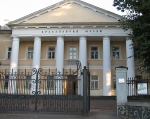
Local Lore Museum
(Dragomanova str.)
In the XIX century it was the first institution of secondary education in the city
of Rivne. Mykola Kostomarov, Panteleimon Kulish used to teach there and Volodymyr
Korolenko – a famous writer – used to study there.

“Kupchynsky’s Gallery”
This is a photo gallery where the works of famous Ukrainian photo-artists are combined
with a cafe “Salvador Dali”. Intellectual and creative people of the city like to spend
their time here.
Read more - here : photo-gallery.com.ua
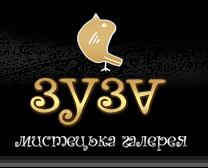
Gallery “Zuza”
Poshtova str.
Here one can buy many works of national artists including materials which are used
for their creation.
Read more - here : zuza.net.ua

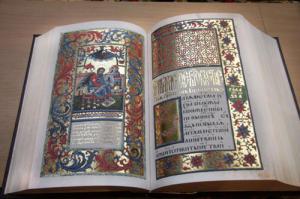
Cultural archeological centre "Peresopnytsia"
The first open-air museum complex “Kniazhe Misto” and Cultural archeological centre “Peresopnytsia” were founded on August, 29 2011 in village Peresopnytsia in Rivnenska region, on the place of the monastery foundation. It includes museum, imitation of cottage and fortification constructions of the XII-XIII centuries, library, conference hall and stock sanctuary. All circumstances for archeological works are made here because the constant archeological expedition works here.
The work for creation of the first Ukrainian Book “The Peresopnytsia Gospels” was finished 450 years ago and all elected presidents of Ukraine take the oath of office on this Gospels.
So in small village Peresopnytsia the cultural and archeological centre was erected, which resembles candle, national Ukraine's coat of arms and opened Book of Gospels.
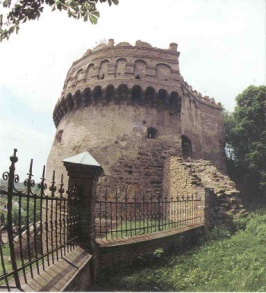
THE OSTROZKI CASTLE, THE TOWN OF OSTROG
This is the oldest castle in Rivnenska region which was founded by the Princes Ostrozki in the XIV
century on Zamkova Gora (Castle Hill) which is located in the south-eastern part of historical
suburb of the town of Ostrog. A set of buildings consists of “Vezha Murovana” (Stone
Watchtower), “Nova Bashta” (NewTower) and “BogoyavlenskaChurch” (Church of the Epiphany).
The castle now belongs to State Historical and Cultural Reserve in the town of Ostrog
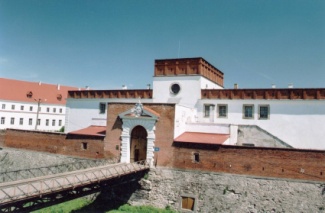
THE OSTROZKI AND LUBOMIRSKI CASTLE, THE TOWN OF DUBNO
It was founded in 1492 by Prince K.Ostrozki on the bank of the river Ikva. It took more than 400
years to build this castle which includes the OstrozkiCastle (XVI century), The Lubomirski Castle
(XVIII century), a ditch, two ramparts with watchtowers. A range of vaults connect the castle with
the ancient monuments of the town. This building now belongs to State Historical
and Cultural Reserve in the town of Ostrog.

NARROW-GAUGE RAILWAY, FROM THE VILLAGEANTONIVKA TO THE VILLAGEZARICHNE
Narrow-gauge railway from the village of Antonivka to the village of Zarichne is the longest (103
km.) operating narrow-gauge railway in Europe (1895) where a great deal of rare equipment is still
being used. There is also one unique object there – the only ferry in the riverStyr. Famous lakes of
Ukrainian Polissya: Bile, Nobel, Voronkivske and Ostrivsky Lakes are situated
nearby.
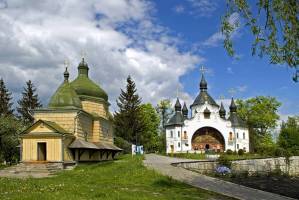
«THE BERESTETSKA BATTLEFIELD» RESERVE, THE VILLAGE OF PLYASHEVA
In the summer of 1651 on the field of Berestetska Battle near the villages of Plyasheva and Ostriv
dozens of thousands Ukrainian Cossacks and peasants were killed as well as great numbers of
the Poles and Tatars. The Berestetska Battlefield Reserve includes a site of dramatic battle
between the army of Cossacks and peasants headed by Bogdan Khmelnitsky and the army
headed by the king of Poland John II Casimir in the island of Zhuravlykha, Georgiivsky Cathedral
(St. George’s Cathedral) and Mykhailivsky Cathedral (St. Michael’s Cathedral), Cossack crossing,
the island of Gayok, “Cossack Yama” and “Monastyrshchyna field” (Cossack cemetery).
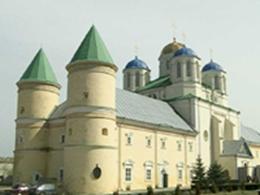
SVYATO-TROICKY FRIARY (THE HOLY TRINITY FRIARY), VILLAGEMEZHYRYCHY
Not far from the town of Osrog in Rivnenska region, four kilometres east between the rivers of
Zbytenka and Viliya a picturesque villageMezhyrychy is located. The buildings of Svyato-Troicky
Friary (The Holy Trinity Friary) which date back to XV-XVIII centuries, Troicka Church (Trinity
Church) from the XV century, walls and towers from the beginning of the XVII century and a big
open-air stove are still preserved in this ex-fortress town with its castle, defensive
buildings and towers.

SVYATO-TROICKY CONVENT (THE HOLY TRINITY CONVENT), TOWN OF KORETS
Svyato-Troicky Convent (The Holy Trinity Convent) – is the main relic of the town of Korets. It was
founded in 1620 as FranciscanChurch. At the beginning of the XX century
Ioanno-PredtechynskaChurch (Church of John the Baptist) and the bell-tower appeared. Both
were built in Russian “tower-chamber” style. The Convent is now full of life. Anna Alexeevna Andro
(Olenina) who inspired the 29-year old Pushkin for a range of poems was buried here.
